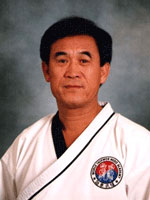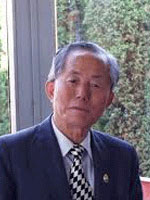- Adambakkam
- Adyar
- Alwarpet
- Ambattur
- Anna Nagar
- Ashok Nagar
- Avadi
- Besant Nagar
- Chetpet
- Choolaimedu
- Chrompet
- East Coast Road (ECR)
- Egmore
- Ekkaduthangal
- Gopalapuram
- Guindy
- K.K.Nagar
- Keelkattalai
- Kilpauk
- Kodambakkam
- Kolathur
- Kottivakkam
- Koyambedu
- Madipakkam
- Mylapore
- Nandambakkam
- Nandanam
- Nanganallur
- Nungambakkam
- Pallavaram
- Pallikaranai
- Parrys
- Poonamallee
- Porur
- R.A.Puram
- Rajiv Gandhi Salai (OMR)
- Ramapuram
- Royapettah
- Saidapet
- Saligramam
- Selaiyur
- Shenoy Nagar
- St.Thomos Mount
- T.Nagar
- Tambaram
- Teynampet
- Thirumullaivoyal
- Tondiarpet
- Vadapalani
- Velachery
- Villivakkam
- Virugambakkam
- Washermanpet
- West Mambalam
- Other Areas
Brief History of Tae Kwon Do
Over two thousand years ago, in the city of Kyongju, Korea, two giants were carved on the tower wall of a Budhist temple. Kyoungju was the capital of the ancient kingdom of Silla at the time these giants were sculpted. The giants, facing each other, are assuming a fighting stance as if they were practicing a martial art. These giants undoubtedly represent the early developments of the modern art of fighting known today as Tae Kwon Do. Records show that Tae Kwon Do was practiced as early as about 50 BC. During this time, Korea was divided into three Kingdoms: Silla, Koguryo and Paekche.  Paintings on the ceiling of the Muyong-chong, a royal tomb from the Koguryo dynasty, have given evidence of the practice of Taek Kyon, the earliest known form of Tae Kwon Do. These, as well as other paintings show unarmed combat using techniques that very much resemble those of modern Tae Kwon Do, specially the use of the knife hand, fist and classical fighting stances.
Paintings on the ceiling of the Muyong-chong, a royal tomb from the Koguryo dynasty, have given evidence of the practice of Taek Kyon, the earliest known form of Tae Kwon Do. These, as well as other paintings show unarmed combat using techniques that very much resemble those of modern Tae Kwon Do, specially the use of the knife hand, fist and classical fighting stances.
Although Tae Kwon Do first appeared in the Koguryo kingdom, it is Silla's warrior nobility, the Hwarang, who are credited with the growth and spread of the art throughout Korea. Out of the three kingdoms, Silla was the first to be formed, but it remained the smallest and less civilized. Because Silla's coastline was always under attack by Japanese pirates, the 19th monarch in the Koguryo dynasty line, King Gwahggaeto, sent forces to help the neighboring kingdom with this problem. It was at this time that Taek Kyon was first introduced to Silla's warriors class, taught directly and in secret to a few sillan warriors by early masters of the art. These warriors trained in Taek Kyon became known as the Hwarang. They initially established a military academy for the young nobility of Silla. This later became a society called Hwarang-do or translated into English, "the way of the flowering manhood". This society adopted Taek Kyon as part of its basic training regimen. The students of Hwarang-do were all members of the young nobility. They were trained in several different disciplines: History, Confucian philosophy, ethics, Buddhist morality, riding, archery, sword play, military tactics and Taek Kyon. The guiding principles of this educational system, were based on the Five codes of Human Conduct, as established by the Buddhist scholar Wonkang. These codes are:
The Hwarang traveled throughout the peninsula in order to learn more about the regions and people. These traveling warriors were responsible for the spread of Taek Kyon in Korea during the Silla dynasty which lasted from ad. 668 to AD. 935. During this period of time, Taek Kyon remained principally as a sport and recreational activity designed to improve physical fitness, although it was an excellent self-defense system. It was not until the Koryo dynasty (935 to 1392) that the focus of the art was changed. During this time, Taek Kyon became known as Subak and it changed from a fitness system to a fighting art. The first widely available book on the art was written during the Yi dynasty (1392 to 1910) in order to promote the art among the general population. The popularization of the Subak during this era were responsible for its survival. Unfortunately, during the second part of the Yi dynasty, the art began losing popularity due to changes in the political views of military activities. For this reason, Subak survived in few families throughout Korea which handed down the art from generation to generation. Subak during this period was maintained by the general population instead of the nobility. In the tragic year of 1909, Korea was invaded by Japan and was occupied for 36 years. Japanese authorities banned completely the practice of any native Korean martial art, but this only increased the interest and renewed the growth of Subak. Eventually, the underground nature of martial arts in Korea changed, when in 1943 other martial arts were introduced to the country.
After Korea was finally liberated in 1945, the first Kwan to teach a native Korean martial art was opened in Yong Chun, Seoul. This dojang was named The Chung Do Kwan. The same year, the Moo Duk Kwan and the Yun Moo Kwan also opened in Seoul. The following year, the Chang Moo Kwan and the Chi Do Kwan. Seven other schools opened between 1953 and the early 1960's. Although all these schools claimed to teach the traditional Korean martial art, each one emphasized a different aspect of Taek Kyon/Subak and several names emerged: Soo Bahk Do, Kwon Bop, Kong Soo Do, Tae Soo Do and Dang Soo Do, besides those who claimed to teach traditional Taek Kyon. Difference between the many Kwans prevented the formation of a regulation board for 10 years. However, these fighting methods found strong acceptance in the military, and in 1952, President Syngman Rhee watched a half-hour demonstration by Korean martial arts masters. Rhee was so impressed that he ordered training in the martial arts to be adopted as part of regular military training.
On April 11, 1955, a meeting was convened to unify the various kwans under a common name. At first, the name of Tae Soo Do was accepted by most kwan masters, however, two years later the name was changed to the familiar Tae Kwon Do. This name was chosen for two main reasons, the first, because it accurately describes the nature of the art (both hand and foot techniques), and second, because in closely resembles the art's early name Taek Kyon. On September 14, 1964, the Korean Tae Kwon Do Association was created. During the 1960s, thousands of Tae kwon Do demonstrators performed around the world before fascinated governments which followed up to invite Korean instructors to teach in their countries. By the 1970s Tae Kwon do had a well established reputation worldwide.
WTF On May 28, 1973 a new worldwide organization, the World Tae Kwon Do Federation (WTF), was formed. Since then, WTF has regulated their style of Tae Kwon Do internationally. In May 1973, the first biennial WTF Championships were held in Seoul as a prelude to the inauguration of the WTF. World championships since then, have been in countries all over the world. Under the auspices of the General Association of International Sports Federation (GAISF), Tae Kwon Do was introduced to the International Olympic Committee (IOC) in July, 1980. Then, the crowning achievement of Tae Kwon Do as a sport came in 1982 when the IOC designated it an official Demonstration Sport for the 1988 Olympic Games in Seoul, Korea. WTF schools usually emphasize Olympic-style full contact sparring. The WTF is represented in the U.S. by the U.S. Taekwondo Union (USTU).
ITF The International Taekwondo Federation is an older organization founded by Choi Hong Hi and based out of Canada. It tends to emphasize a combination of self-defense and sparring, and uses forms slightly older than those used by the WTF. It was introduced into the United Kingdom by Master Rhee Ki Ha in 1967. The TAGB (Tae Kwon-Do Association Of Great Britain) was formed in 1983 and was the founder member of the British Tae Kwon-Do Council (BTC) on April 21st 1988. The BTC is recognised by the Sports Council. The TAGB is a member of Tae Kwon-do international, a world wide body with representation in every continent of the globe. TKD International was inaugurated on November 13th 1993.
Tae kwon do, is nowadays practiced officially in 120 countries and its membership is over 20 million people, making it the most practiced martial art in the world.

Kim-Young-Ho


